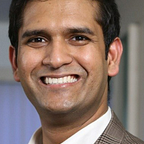A critical view of web3
We are at a critical stage in the advent of internet technology where we will observe the transition of web2 into web3. Nonetheless, as the need for decentralization grows, numerous key issues concerning the current status of blockchain technology and its purported “decentralization” are being raised.
“A lot of it boils down to limited technical resources and financing,” Vitalik Buterin admitted in response. It’s easy to create things the lazy centralized way, and ‘doing it correctly’ requires a lot of effort.” Or consider Jack Dorsey’s recent tweet, in which he asserted that today’s networks are owned by venture capitalists.
Their remarks show that, as things stand, popular blockchains appear to be a long way from attaining their decentralized ambitions.
Is it truly decentralized?
Much before Moxie and Jack called Web3 out for becoming what it was supposed to replace, a series of events occurred that made many people doubt the ecosystem’s decentralization. Take, for example, a number of old layer-1 links. While many claim to be decentralized, recent occurrences have demonstrated that current layer-1 protocols are not actually decentralized.
Whether it was Ethereum’s Infura debacle in 2020, when the network experienced multiple outages, eventually leading to a “accidental” hard fork due to mysterious behavior by the product team, the continuous disruptions on Solana, or the AWS outage that took down dYdX, the blockchain has been plagued by blackouts. If you look attentively, you’ll see that there are several cases that highlight the essential question: Is blockchain in control of a certain group of individuals?
In terms of centralization, Web2 has reached its pinnacle. There are several issues that Web3 must address, ranging from data collection and censorship on social media platforms to the unjustified banning of individuals. It’s becoming evident that establishing decentralization in the next web iteration is more important than ever.
The future, however, remains unknown due to the obviously massive and difficult task of guaranteeing that the next edition of the web is managed by its users. Owing to the difficulty of maintaining a full node, most people are either ineligible to join due to cash limits or lack the expertise or ambition to achieve.
Reimagining:
Scott Galloway has just joined the chorus of Web3 critics. And he was correct about a few things, namely the industry’s lack of diversity. Nonetheless, he, like others, was unable to come up with concrete suggestions for how things should be done differently. Instead of debating whether or not everyone could operate a server one day, he just agreed with Moxie that “people would never run their own servers.” Then there are some who argue, “Why would anyone use Web3 if they had to pay for everything?” Nothing comes free!
Why Substitute L1s are temporary remedy:
While Solana, Avalanche, and even Polygon were first launched as alternatives to other blockchains’ exorbitant fees, the trade-off they made came with a price. While low costs are beneficial to users, they are paid for by compromising decentralization. Because it’s inexpensive, the Solana network has seen its fair share of bot activity.
However, the cheap fees will not last indefinitely. In reality, when demand for networks like Polygon and Avalanche grows, fees on those networks begin to rise. Users will flock to a network where they can transact at a reduced cost. With greater demand, more transactions must be accommodated in the same block space as previously. Users eventually compete for block space, resulting in pricing hikes.
While it appears that decentralization is the ultimate aim in the blockchain sector, this is not always the case. Decentralization, on the other hand, is a means to an end. A network can only be censorship-resistant if it is genuinely decentralized.
Furthermore, when a network is beyond suppression, promising free speech, information flows freely and individuals may communicate and transfer value across borders.
Web3 must be decentralized in order to offer people power and enable access without keeping anyone out. There is no centralized point of control since the system is so dispersed. Only then will Web3 be able to assist in the realization of human potential and the empowerment of freedom.
